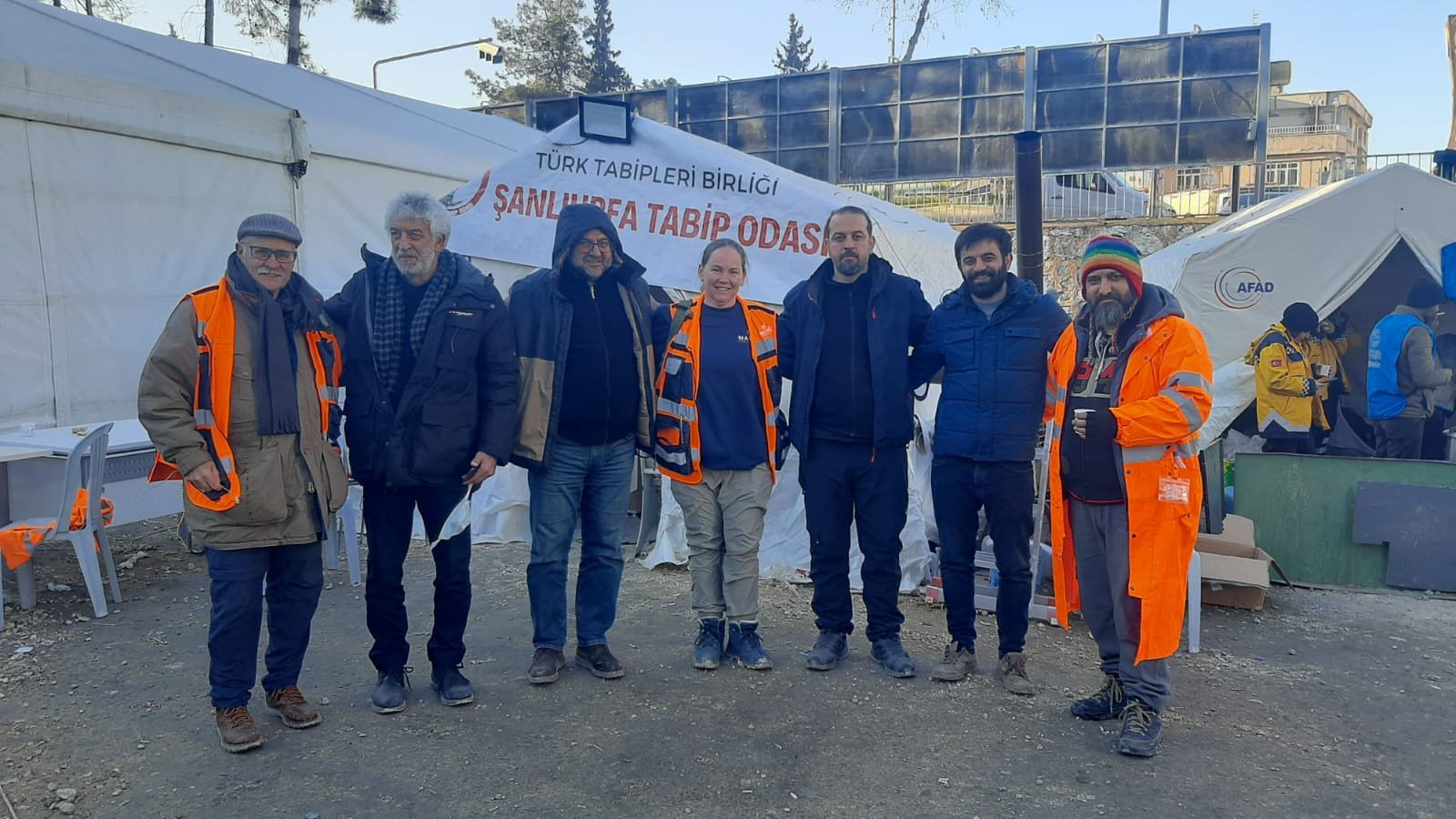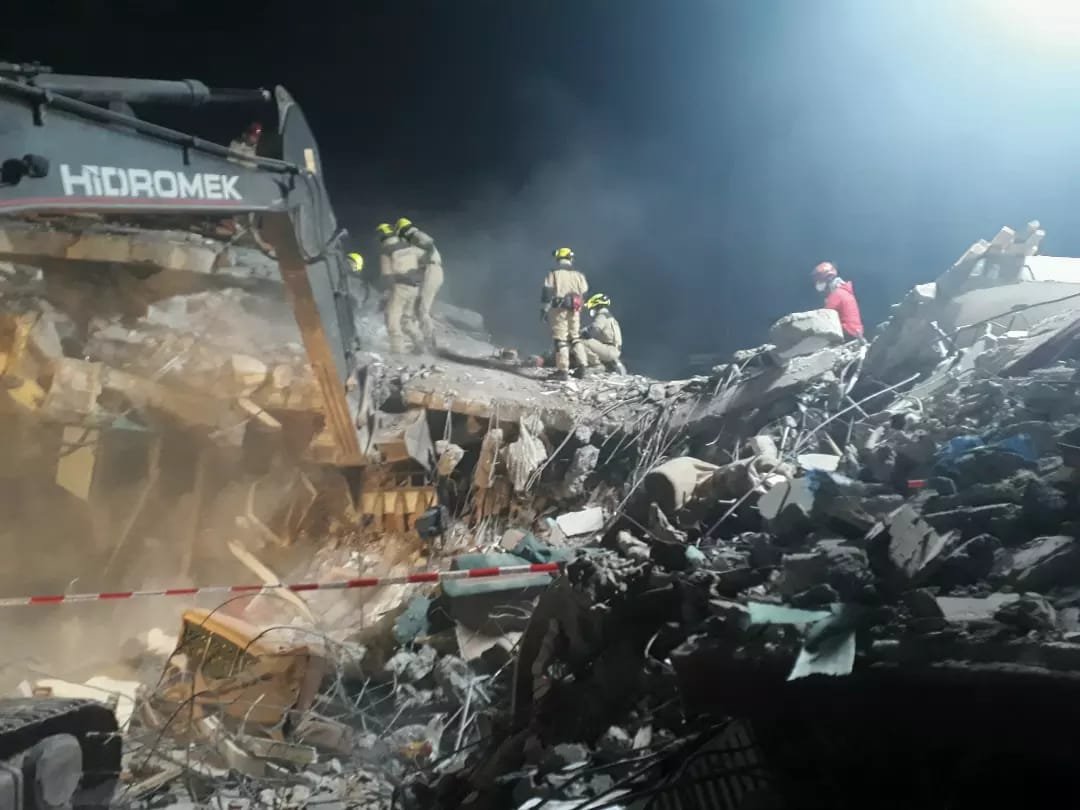
Turkey Earthquake Relief Operation
February 2023
Within days of the Feb 6th earthquakes, NATAN’s Medical and Trauma relief teams were on the ground in the Adiyaman region of southeastern Turkey, in the center of the disaster zone. As of 1 March 2023, more than 51,800 deaths were confirmed: more than 45,000 in Turkey, and more than 6,700 in Syria. It is the deadliest earthquake in Turkey since the 526 Antioch earthquake and the deadliest in Syria since the 1822 Aleppo earthquake. Hundreds of thousands of survivors were left homeless, hungry and sleeping outdoors in freezing temperatures with no access to sanitation, clean drinking water.
NATAN professionals brought medicines, healed wounds and saved lives, but even more , they kept hope alive. Above photos by NATAN translator, Engin Cetinkaya. Taken in Adiyaman Province, an area heavily hit by both of the two earthquakes. Read NATAN Newsletter: Healing Bodies and Souls in Turkey
NATAN’s medical and psychosocial emergency care and assessment Team landed on the Turkey devastated zone on the fourth day after the earthquake. Prior to the deployment intensive meetings with Turkish authorities, and local and international NGOs allowed a better understanding of the situation. The careful research was required to ensure the team’s ability to operate safely and effectively. The challenges in the extremely vast disaster zone combined the casualties of the successive earthquakes with the freezing temperatures, the hardest situation NATAN ever met.
The NATAN team was well-equipped for the challenging conditions. Within days, NATAN logistics team had managed to equip the delegation with sub-zero survival equipment and the proper medicines. and supplies. Our team was on the ground in Turkey from 10-Mar-23 through 17-Mar-23. It comprised: a head of mission, a GP expert in adult emergency medicine, a pediatric emergency doctor, a family practice doctor, a psychological trauma care doctor, and three Turkish volunteers.
As in every natural disaster relief operation, the first stage is the rescue, followed by the support to IDPs (shelter, food, and hygiene) and beginning rehabilitation. NATAN team brought help to the rescue stage which was greatly appreciated. Thanks to our team, survivors rescued from the rubble received immediate care at the Adyiaman hospital. They will not forget the 8 years old child rescued after 120 hours, only survivor of his family.
On 16 March the Turkish government declared the end to the rescue effort and asked foreign medical teams to leave. The Turkish Ministry of Health assumes that their medical teams and equipment are now able to take over.

NATAN doctors treating earthquake survivors in Turkey

NATAN volunteer doctors examine a 14-year-old girl pulled from the rubble 4 days after the earthquake. Kahta, Turkey, 11-FEB-23

NATAN volunteer, Dr. Yoav Carsenty treats a child rescued from earthquake rubble, 11-FEB-23, Kahta, Turkey

NATAN doctors examine 14-year-old Rümeysa who has just been saved from the rubble. She is conscious and communicating with family members. Her parents were also rescued alive.

Adiyaman, Turkey, 13-FEB-23 NATAN Trauma Intervention Expert, Dr. Einav Levy and NATAN MD Dr. Yoav Carsenty aid earthquake survivors who have been evacuated to a large sports center providing temporary shelter.

TURKEY EARTHQUAKE RELIEF OPERATION Adiyaman, Turkey, 13-FEB-23 NATAN MD Dr. Yoav Carsenty, and Trauma Intervention Expert, Dr. Einav Levy aid earthquake survivors who have been evacuated to a large sports center providing temporary shelter.

NATAN medical team aid earthquake survivors 11-Feb-23 Kahta, Turkey

NATAN medical team working alongside local doctors and medics at the Adiyaman hospital. Many patients including children were rescued from the ruins after 5 days.

NATAN medical team working alongside local doctors at Adiyaman hospital in southeastern Turkey, 5 days after the earthquake.

NATAN medical team working alongside local doctors at Adiyaman hospital in southeastern Turkey, 5 days after the earthquake.

NATAN doctors use the butterfly portable ultrasound device to examine an earthquake survivor. Adiyaman Province, Turkey.

TURKEY EARTHQUAKE RELIEF OPERATION Adiyaman, Turkey, 16-FEB-2023 NATAN’s team of medical volunteers set up a field clinic in a remote area, in the Adiyaman Province. Clinic was set up with partners, NGO Türk Tabipleri Birliği

NATAN MD Sharon Shaul uses a portable 'butterfly' ultrasound device to treat a woman, survivor of the Feb 6 earthquake, in a remote area which was struck by the quake.

NATAN MD Hilla Rosen examines a man in a remote village which was struck by the Feb 6 earthquake

NATAN MD Yoav Carsenty treats an infant in a remote village struck by the Feb 6 earthquakes. Dr. Carsenty is an expert in pediatric emergency and traumaץ

NATAN MD Sharon Shaul examines a woman in her home in a remote village of Adiyaman Province, heavily hit by the Feb 6 earthquakes.

Adiyaman Province, Turkey - Feb 15,2023: NATAN MD Yoav Carsenty digs a drainage canal as the team help set up a tent camp for survivors in a remote area struck by the Feb 6 earthquake.

A damaged home at the site where NATAN team set up a field clinic. Adiyaman Province, Turkey

NATAN MD Yoav Carsenty pitches in: In addition to treating patients, Dr. Carsenty grabbed a shovel and dug a drainage canal as the team helped set up this tent city for earthquake survivors.

NATAN team arrive in a remote village to set up a field clinic. Adiyaman Province, Turkey

NATAN medical team treating earthquake survivors at Adiyaman hospital, near epicenter of the quake in Turkey.

NATAN team members with partners in a village struck by the Feb 6 earthquake. Adiyaman Province, Turkey
The NATAN team deployed in Adiyaman Province, at the center of the disaster zone - between the sites of the two earthquakes which struck Monday Feb. 6th. The city of Kahta in Adiyaman Province welcomed the NATAN delegation and arranged temporary accommodations in a university dormitory.
HELPING THE HELPERS IN THE CENTER OF THE DISASTER ZONE
NATAN's Dr. Einav Levy (seen here, far left) provided crucial resilience training to the medical staff at the Adiyaman University Hospital, who are severely strained and fatigued from 10 days of round-the-clock work. In addition to sheer exhaustion, the staff deal with the stressful scenes played out daily in the overcrowded hospital. The training provided much-needed respite from the extreme stress. Dr. Levy provided two rounds of training which included trauma intervention techniques, psychological first aid and tools for healing and self-care. Dr. Levy, a longtime member of NATAN, is Head of the Trauma Division at the School of Social Work at Tel Hai Academic College, and Founding Director of The Israeli School of Humanitarian Action.
THE BUTTERFLY ADVANTAGE: NATAN’s Portable Ultrasound device proves invaluable in a disaster zone
When the NATAN medical team arrived at the Adiyaman University Hospital, they quickly became an indispensable part of the Emergency Room team. NATAN doctors are used to working in the field, with limited access to large-scale medical equipment. For this reason, our team travels with at least one Butterfly portable ultrasound device which can be used with a smartphone or iPad. In the days following the Feb. 6 earthquakes, Adiyaman University Hospital, in the heart of the disaster zone, was quickly overwhelmed with the number of survivors being pulled from the rubble. Although the hospital was equipped with state-of-the-art ultrasound and scanning equipment, it was near-impossible to take advantage of it for the most severe cases. Survivors were brought in to the Emergency Room on the ground floor and treated there. The hospital’s scanning equipment was on an upper floor in an area not set up for fast turnaround. NATAN’s portable ultrasound solution proved to be a life-saver in that week following the quakes. NATAN MDs also used the portable Butterfly device outside of the hospital, at a field clinic set up in a remote village and also inside the homes of earthquake survivors who were not well enough to leave their homes to be examined.
Seen here (top and bottom left): NATAN MDs using Butterfly portable ultrasound device at the hospital and in the field. also seen (image bottom right) the hospital’s state-of-the-art ultrasound and scanning equipment center, which was inaccessible to most of the earthquake survivors being brought in for urgent care in the early days following the quakes.
NATAN Team departs for Turkey
Head of Mission: Zeevik Shafrir; Medical Team: Dr Yoav Carsenty – MD; Dr. Hilla Rosen – GP; Dr. Sharon Kronfeld Shaul - Head of NATAN Emergency Medical Relief; Daniel Kahn, NATAN Chair, seeing the team off; far right: Trauma/Psychosocial Aid: Dr Einav Levy, Head of the Trauma Division at the School of Social Work at Tel Hai Academic College. The team was joined in Turkey by our local coordinator Didem Kumbaroglu and translator Engin Cetinkaya

NATAN partnership during Turkey Earthquake Relief operation in Adiyaman, Turkey with local NGO: Turk Tabipleri Birligi, Far left: Zeev Shafrir, Head of Mission; center: Dr. Sharon Shaul; Far right: translator Engin Cetinkaya.

Adiyaman, Turkey: tents set up for survivors left homeless by the Feb 6 earthquake. With local NGO: Turk Tabipleri Birligi,

NATAN trauma intervention expert Dr. Einav Levy (center) with NATAN local coordinator Didem Kumbaroglu (left) and translator Engin Cetinkaya

NATAN trauma intervention expert Dr. Einav Levy with NATAN local coordinator Didem Kumbaroglu (left) and Dr. Fazil Kivanc Aydinalp, Head of Emergency Services at Adiyaman University Hospital (center).

Turkey Earthquake Relief Adiyaman, Turkey L-R: Zeev Shafrir, Head of Mission; Dr. Sharon Shaul; Local MD; Far right: Dr. Einav Levy

NATAN team sort medical supplies at site of field clinic. Adiyaman Province, Turkey

Medical supplies donated by NATAN to local village hit by Feb 6 earthquake.

NATAN team at local hospital

NATAN medical team present a gift of Butterfly Portable UltraSound Device and iPhone to Emergency Services MD Fazil Kivanc Aydinalp at the Adiyaman University Hospital in southeastern Turkey. The device is the gift of the JDC Joint.

Emergency Services MD Fazil Kivanc Aydinalp holds Butterfly Portable UltraSound Device and iPhone donated by NATAN. at the Adiyaman University Hospital in southeastern Turkey. The device is the gift of the JDC Joint.

NATAN medical team is seen here at work in Adiyaman Hospital: Dr. Yoav Carsenty, Dr. Sharon Shaul and Dr. Hilla Rosen, Trauma Intervention Expert Dr. Einav Levy and local coordinator Didem Kumbaroglu receive and treat incoming survivors at the hospital.











